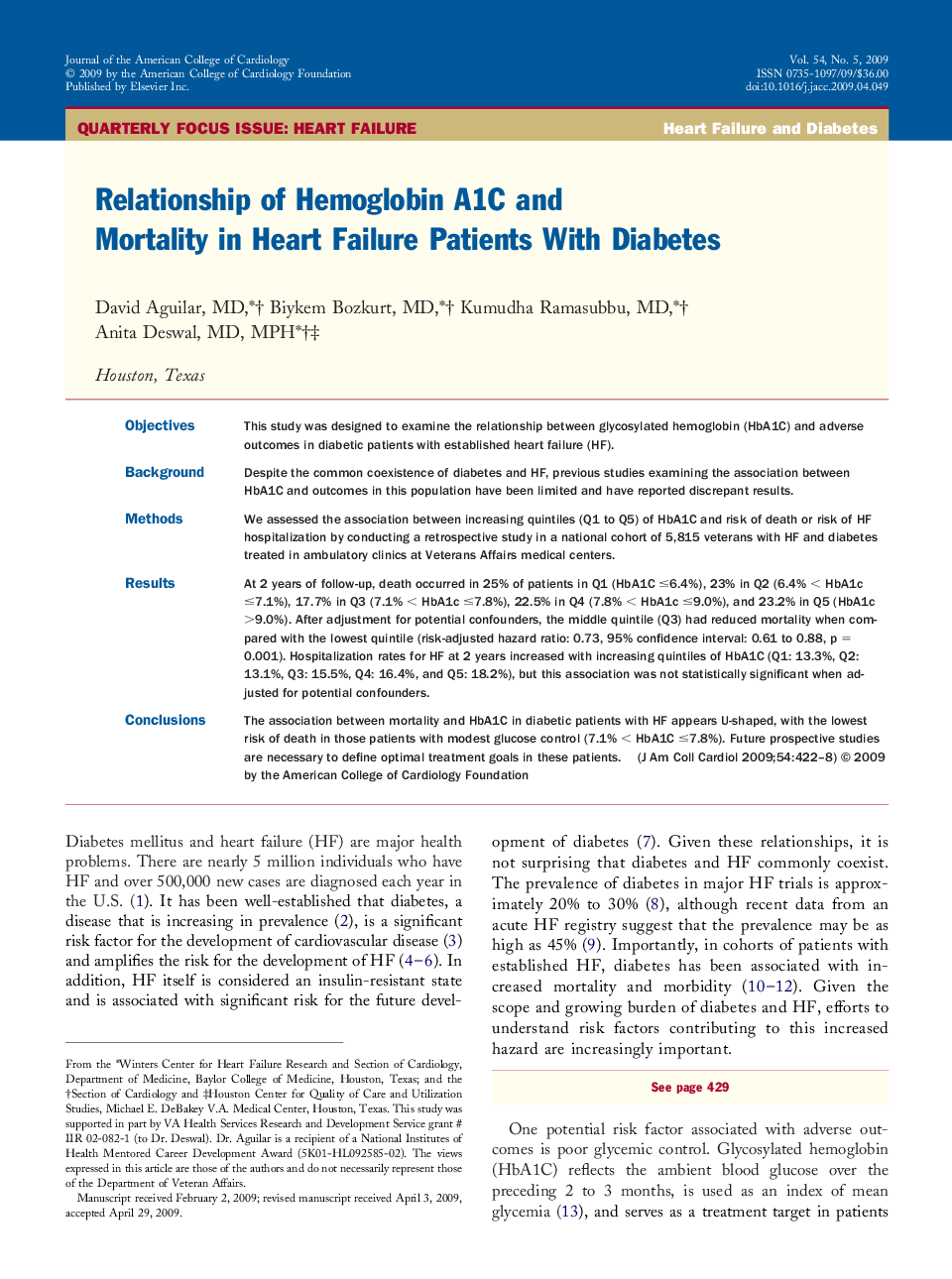| Article ID | Journal | Published Year | Pages | File Type |
|---|---|---|---|---|
| 2950998 | Journal of the American College of Cardiology | 2009 | 7 Pages |
ObjectivesThis study was designed to examine the relationship between glycosylated hemoglobin (HbA1C) and adverse outcomes in diabetic patients with established heart failure (HF).BackgroundDespite the common coexistence of diabetes and HF, previous studies examining the association between HbA1C and outcomes in this population have been limited and have reported discrepant results.MethodsWe assessed the association between increasing quintiles (Q1 to Q5) of HbA1C and risk of death or risk of HF hospitalization by conducting a retrospective study in a national cohort of 5,815 veterans with HF and diabetes treated in ambulatory clinics at Veterans Affairs medical centers.ResultsAt 2 years of follow-up, death occurred in 25% of patients in Q1 (HbA1C ≤6.4%), 23% in Q2 (6.4% < HbA1c ≤7.1%), 17.7% in Q3 (7.1% < HbA1c ≤7.8%), 22.5% in Q4 (7.8% < HbA1c ≤9.0%), and 23.2% in Q5 (HbA1c >9.0%). After adjustment for potential confounders, the middle quintile (Q3) had reduced mortality when compared with the lowest quintile (risk-adjusted hazard ratio: 0.73, 95% confidence interval: 0.61 to 0.88, p = 0.001). Hospitalization rates for HF at 2 years increased with increasing quintiles of HbA1C (Q1: 13.3%, Q2: 13.1%, Q3: 15.5%, Q4: 16.4%, and Q5: 18.2%), but this association was not statistically significant when adjusted for potential confounders.ConclusionsThe association between mortality and HbA1C in diabetic patients with HF appears U-shaped, with the lowest risk of death in those patients with modest glucose control (7.1% < HbA1C ≤7.8%). Future prospective studies are necessary to define optimal treatment goals in these patients.
